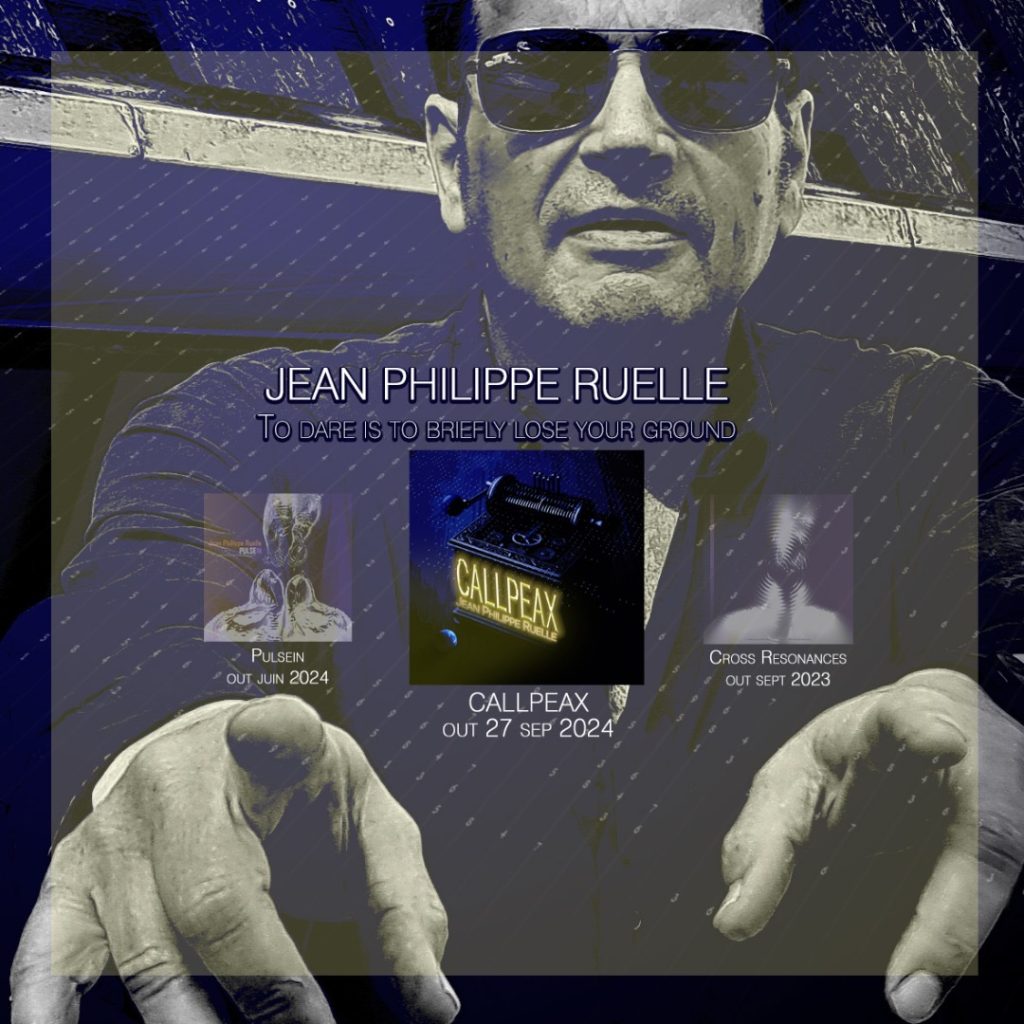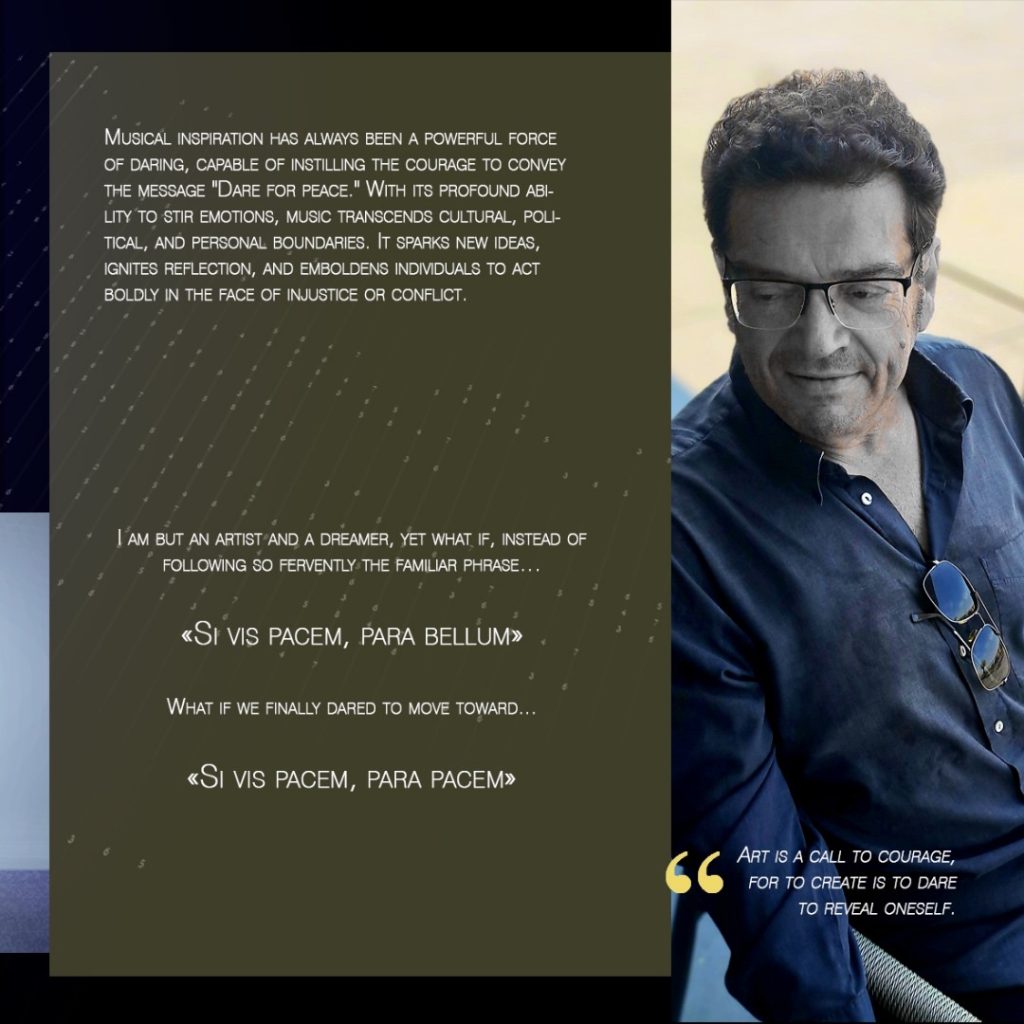Jean-Philippe Ruelle, a rising talent in the electronic music scene, is a composer recognized for creating distinctive and captivating auditory soundscapes. Ruelle combines complex electronic elements with emotional melodies to craft immersive experiences that draw listeners into introspective, contemplative spaces, showcasing both his creativity and technical expertise. Based in Mons, Belgium, Ruelle draws inspiration from electronic music pioneers such as Vangelis, Jean-Michel Jarre, and Air. His pieces showcase a deep grasp of musical narrative, seeking to create moments of tranquility and self-reflection.

“Callpeax,” a song by Jean-Philippe Ruelle, was released on September 27th, 2024, captivating the audience with its seamless combination of emotion, technical expertise, and creative vision from the very beginning. Ruelle is recognized for his skill in crafting musical landscapes that carry listeners to reflective worlds, and his newest song showcases his talent reaching unprecedented levels. Drawing inspiration from iconic electronic musicians, Ruelle intricately crafts a complex storyline in “Callpeax” that reflects the groundbreaking nature of his musical inspirations and highlights his distinct sound. This release represents a significant step forward for Ruelle, blending his deep understanding of electronic composition with a distinctively peaceful message that’s hidden in layers of musical nuance.
The concept behind “Callpeax” is grounded in the enigmatic phenomenon of number stations, secretive broadcasts thought to convey coded messages. Ruelle incorporates this mystery into the fabric of his composition, infusing it with sequences of numbers that translate to a universal message, “Dare to peace,” using a simple code (A=1, B=2, etc.). This encoded message is then translated into different languages, creating a soundscape that speaks across borders and cultures. The clever integration of this concept elevates the song beyond a simple listening experience; it becomes a call for introspection, peace, and unity, subtly urging listeners to pause, decode, and reflect on the essence of peace in their own lives.
From the beginning, “Callpeax” builds a tranquil yet layered atmosphere, setting a reflective tone with warm, enveloping synths and ambient pads. The textures here are soft yet intricately detailed, inviting listeners to sink into a state of relaxation and mindfulness. Ruelle carefully balances these initial sounds, constructing an ambient landscape that feels simultaneously vast and intimate. This serene foundation is soon joined by gentle piano melodies that thread through the soundscape, each note adding a quiet depth that enhances the song’s reflective nature. The song’s deliberate pace offers listeners the time and space to become fully absorbed, creating an almost meditative experience.
A defining element of “Callpeax” is its subtle use of vocal textures that weave in and out of the background, adding an ethereal quality to the track. These haunting vocal layers are not prominent but rather serve as a spectral presence, adding to the mysterious aura of the song without detracting from its instrumental focus. The decision to integrate vocals in this understated manner reflects Ruelle’s meticulous attention to detail and restraint as a composer. Instead of overwhelming the listener, these vocal textures enhance the emotional pull of the track, deepening the immersive experience while leaving room for personal interpretation.
Instrumentally, “Callpeax” displays Ruelle’s masterful touch with electronic and acoustic elements alike. The warm brass sections add a grounding, almost cinematic quality, contrasting with the light, airy synth layers. The piano remains a constant, delicate presence throughout, anchoring the piece and adding a human touch to the otherwise synthesized soundscape. Ruelle’s choice to use these organic elements alongside electronic sounds creates a harmonious blend that feels both timeless and modern. This interplay of texture and melody showcases Ruelle’s ability to craft compositions that are as complex as they are accessible, each element enhancing the song’s overall mood without competing for attention.

The downtempo electro rhythms in “Callpeax” serve as a subtle yet effective backbone for the track, gently guiding the listener without disrupting the song’s tranquil flow. The percussion is used sparingly, highlighting specific moments instead of controlling the tempo, and allowing the ambient elements to shine. Ruelle’s minimalistic approach to rhythm in this context is very impactful, providing a beat to the song that keeps it interesting while also preserving its peaceful vibe. This controlled method of managing rhythm demonstrates Ruelle’s growth as a composer, highlighting his ability to uphold a careful equilibrium between structure and ambiance.
The production quality of “Callpeax” Is flawless, as Ruelle meticulously focuses on clarity and balance in the mix. Each sound in the track is carefully positioned to form a unified, engaging soundscape where every layer contributes to the overall mood. The synths’ warmth, percussion, and vocal textures’ haunting quality all come together smoothly, making the track sound pleasing and emotionally impactful. Ruelle’s artistic decisions highlight every aspect and maintain a cohesive balance, creating a refined, top-notch work that encourages audiences to perceive it as a unified masterpiece.
As a whole, “Callpeax” showcases Jean-Philippe Ruelle’s skills and emotional depth as a composer on an introspective journey. The meticulously constructed elements and profound theme elevate the song beyond a mere instrumental piece; it transforms into a complete musical journey. The focus on precision and commitment to his art by Ruelle can be seen in each note, resulting in a song that stays with the listener even after it has finished. “Callpeax” encourages audiences to appreciate its aesthetics and connect with its meaning, contributing significantly to the electronic music genre.
For more information about Jean-Philippe Ruelle, click on the icons below.

